High Performance Computing with FLOW-3D CLOUD

With the increasing use of simulation software for solving complex problems, enabling faster design cycles, while maintaining the accuracy of the solution, is critical. At Flow Science, we understand the importance of providing accurate and validated solutions in shorter durations. To accomplish this we offer a high performance computing version of FLOW-3D called FLOW-3D Cloud.
Heat Transfer Coefficients for Die Spray Cooling
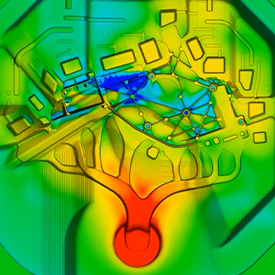
A new, simpler way to calculate heat transfer coefficients for the die spray cooling model has been developed in FLOW-3D CAST v5.0, which is based on known or easy-to-obtain spray medium properties. In this blog, I will talk about the new HTC calculation method followed by an example and a validation.
Global Conditions for Active Simulation Control
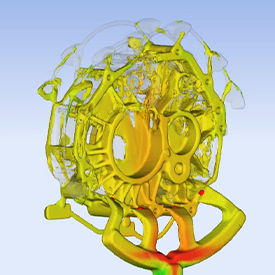
In the first blog in the FLOW-3D CAST v5.0 development series, I will discuss the implementation of Global Conditions for Active Simulation Control. Active Simulation Control was first introduced in FLOW-3D v11.1 and FLOW-3D CAST v4.1 to give users greater control over their simulations in terms of autonomous triggering of actions when appropriate conditions are met during the simulation run.
Continuous Inkjet Printing

In this blog, I will discuss the physics behind continuous inkjet printing, followed by the FLOW-3D simulation studies conducted by Ioannis H. Karampelas, CFD Engineer at Flow Science. Further advancing his work, I ascribe randomness to the droplet generation process, inspired by the application of inkjet in the OLED printing industry, and illustrate the variation in the resulting droplets.
Microfluidic Palette – A Gradient Generator

Continuing our work with microfluidics modeling, simulating and validating gradient generation devices is our latest undertaking at Flow Science. Diffusive based gradients are an integral part of many complex biological processes.
Microfluidics Particle Sorting Using Gravity
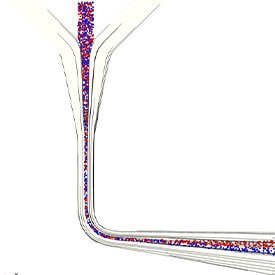
Microfluidic particle sorting has applications in diagnostics, chemical and biological analyses, food and chemical processing as well as environmental assessment. In a previous blog I talked about microfluidics particle sorting using hydrodynamics. Building on the same topic, I will discuss another method of micro particle sorting using gravity.
Runner System Optimization
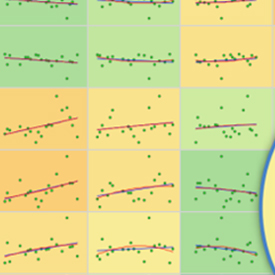
Design optimization is a mathematical technique that can be used, together with computational fluid dynamics, to identify the best design to achieve one or more desired objectives, while taking into account a spectrum of design parameters and constraints. Optimization has become more and more popular in recent years as quality requirements increase and computational resources become faster and more-powerful, allowing for iterative runs.
Microfluidics Particle Sorting Using Hydrodynamics

Microfluidic particle sorting has applications in diagnostics, chemical and biological analyses, food and chemical processing as well as environmental assessment. This blog will discuss how FLOW-3D can simulate the physics of particle sorting techniques.
Mixing in Microchannels – Design Optimization
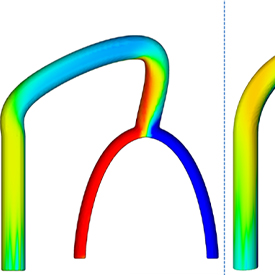
Mixing fluids can be very important in the design of miniaturized chemical and biochemical analysis systems. In a previous blog, I discussed the challenges that arise because of the laminar flow regime and how one might try to overcome the challenges by modifying geometry to induce mixing. In this blog, I will discuss our work on further optimizing the microchannel geometry using the design optimization software, CAESES®, from Friendship Systems GmbH.
A Tour of Interactive Geometry Creation
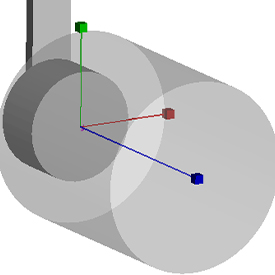
The last in our series of blogs on FLOW-3D v11.2’s new developments is this discussion of the new tool for interactive geometry creation. This post will take you on a quick tour of a few applications and benefits of this tool.
More on Mooring Lines

Continuing our series of posts dedicated to FLOW-3D v11.2’s new developments, and moving on from the world of particles, I will talk today about the new capabilities that have been added to our mooring lines model. In FLOW-3D v11.2, new features include predicting breaking of lines, and the ability to simulate the free end dynamics of mooring lines.
Gas Particles and Microbubble Mixing
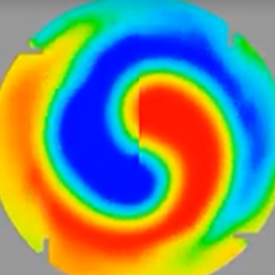
Mixing different fluids with potentially different properties remains one of the most important and potentially costly industrial processes. In this article, I will complete our presentation of the newly-redesigned particle model in FLOW-3D v11.2 and take a fresh look into one of the most common and essential industrial processes: mixing.
Laser Metal Deposition and Fluid Particles
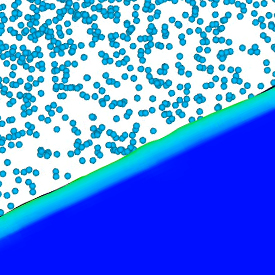
Continuing with the blog series featuring new developments in FLOW-3D v11.2, I will focus in this post on the capabilities of fluid particles, one of the new particle classes in the particles model. Fluid particles directly inherit fluid properties, including evaporation and solidification. There can be a variety of cases where fluid particles can be applied: from a relatively simple rainfall modeling to complicated Selective Laser Melting (SLM) modeling.
Mass Particles and Acoustophoretics
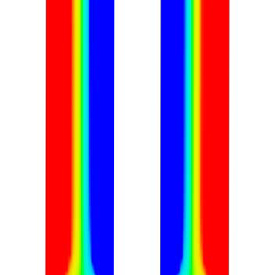
FLOW-3D v11.2 is all set to be released in a few weeks with many improvements to existing models and new developments. In anticipation of this release, we are turning the focus of our blog series to new developments coming in this release, like the particle model, wave absorbing components, mooring lines and interactive geometry.
Thermocapillary Actuation
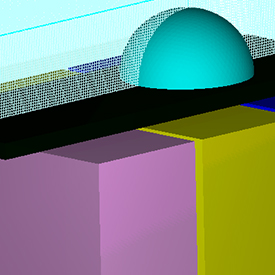
Microfluidic devices like lab-on-a-chip involve parallel and automated routing, mixing and reacting of a multitude of liquid samples. One way of performing these actions is using thermocapillary actuation. Thermocapillary actuation does not require any external mechanical forces, and therefore is a cleaner and more cost-effective way of transporting fluid samples.
